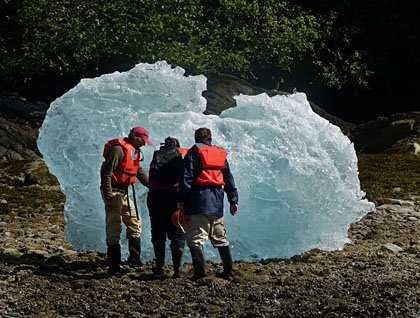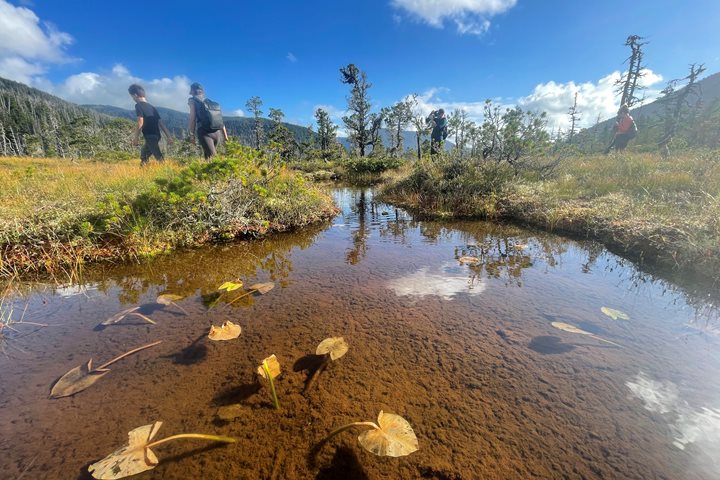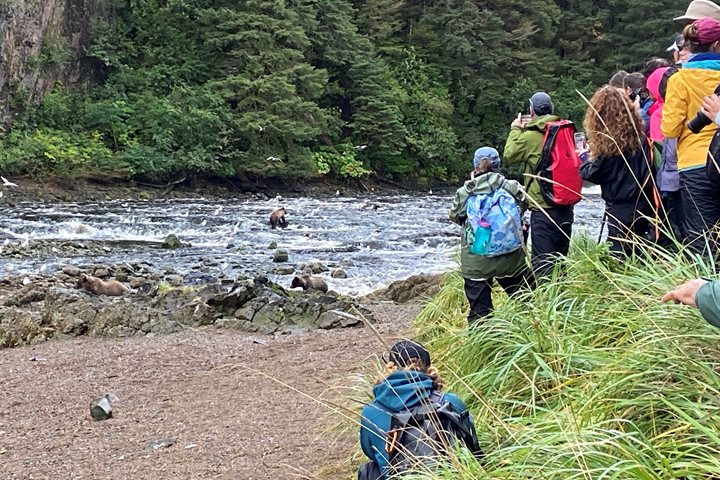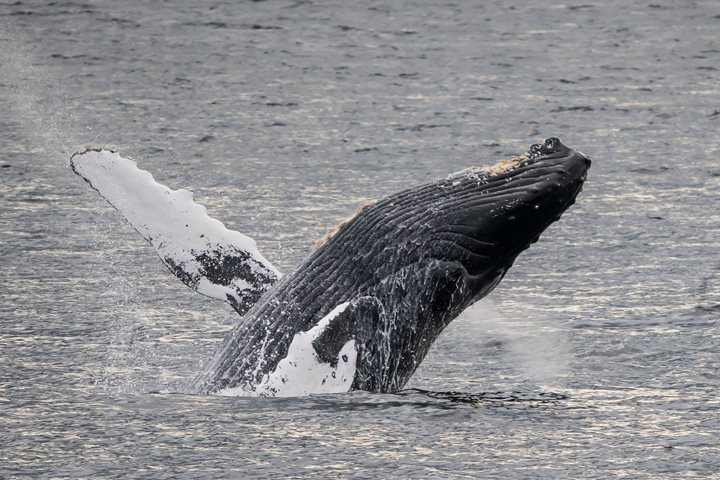Brilliant blue sky and dazzling sunshine greeted us on this first day of August as we approached the entrance to Tracy Arm and our destination at William’s Cove. We spent the morning hiking, kayaking, and exploring aboard our expedition landing craft in this quiet bay. Bears often travel parallel to shore just within the trees. We followed their routes through carpets of moss and ferns shadowed by spruces and hemlocks. We also walked through a meadow margin that separates the forest from the sea. Blossoms of yarrow, paintbrush, and silverweed splashed color across the vivid green background. Kayakers paddled past sea ducks called scoters, marbled murrelets, and pigeon guillemots to get a close look at a floating piece of ice. Those who opted for a motorized cruise poked along the water’s edge and at one spot climbed out to examine a stranded bergie bit grounded in the seaweed. Eventually all returned to the ship, and the engines sprang into action. Before we even left the bay, several of the guests spotted two killer whales. The ship immediately slowed and turned to allow better views of these handsome and charismatic animals. Their tall dorsal fins rose, often in synchrony, over and over again. We could have stayed for hours, but the glacier, still many miles away, lured us on.
Tracy Arm is within a stunningly beautiful wilderness area in Tongass National Forest. Cut long ago by rocks imbedded in tongues of ice, the steep walls rise abruptly from teal-colored water. Waterfalls tumbled from the heights, and sunlight glinted off the rocks. Part way up the channel, we intercepted two wilderness rangers in kayaks. They graciously joined us for a short while to provide information about this special place and to describe their work as forest service representatives. The ship continued inland and finally reached the mighty glacier that once filled the fjord to overflowing.
The expedition landing craft dropped into the water, and we boarded them to go closer to the glacier’s face. Rugged slopes, scraped bare of trees, flanked the ice. Ever so slowly alders, willows, and herbaceous plants have taken root in the thin to non-existent soils. With enough time, forests will one day cover this de-glaciated landscape. We stayed by the South Sawyer’s terminus until deep shadows spilled from above. It was then time to turn back and follow the path taken by the glacier all the way back past William’s Cove to the open water beyond. What a perfect combination of experiences for our final full day together on the National Geographic Sea Bird in Southeast Alaska!







